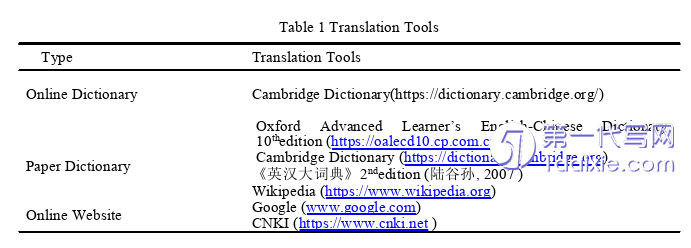本文是一篇英语论文,笔者通过翻译实践,译者自身翻译水平得到了提升。该文本的翻译为中文读者了解生酮饮食提供了途径,也为日后翻译有关生酮饮食的文本内容提供了参考。
Chapter 1 Task Description
1.1 Selection of Ketogenic Diet
The selection of the book“Ketogenic Diet”as the source text for this translationpractice is motivated by several factors.Firstly,the translation material is related to thetranslator’s interests and hobbies.Researchers should choose topics that interest them.During her university years,the translator experimented with the ketogenic diet,acquireda systematic understanding of ketogenic diet-related knowledge,and studied thefundamental principles.She has a genuine interest in this field.This makes it easier forthe translator to translate materials related to the ketogenic diet and gain a deeperunderstanding of this field.There are many materials about the ketogenic diet andresearch available in online libraries,making it convenient for the translator to read andstudy.
Secondly,in terms of content,this book provides a systematic explanation of whatthe ketogenic diet is,its benefits,and what can be consumed on a ketogenic diet.Thecontent is rich,well-detailed,and easy to understand.The original author has includednumerous illustrations of ketogenic food items in the book,which serve to pique thereaders’interest.Translating this book can facilitate Chinese readers’understanding ofthis field,be well-received by readers,broaden the horizons of Chinese readers,andpromote cross-cultural exchange between China and the West.

1.2 Analysis of the Source Text
Before translation,the translator collects a lot of information about Ketogenic Diet,this section mainly introduces the content of the source text and its language features.
1.2.1 Introduction to the source text
The source text provides a systematic overview of the ketogenic diet,which is anutritional approach emphasizing low carbohydrate intake and high-fat consumption.Thecontent of the text begins with an introduction,establishing the context and providing anoverview of the ketogenic diet.It first delves into the fundamental principles anddefinition of the ketogenic diet.Subsequently,it explores the potential benefits ofadopting the ketogenic dietary approach,such as blood sugar control,enhanced mentalfocus,increased energy levels,acne management,anti-aging effects,and appetiteregulation.
Furthermore,the text discusses the relationship between the ketogenic diet and itspotential impact on cancer,including dietary recommendations.The author of the sourcetext is dedicated to exploring the relevance of the ketogenic diet in the management ofepilepsy.The text then examines the potential influence of the ketogenic diet on bloodpressure and related health considerations.It also provides guidance on specific foods toinclude and exclude in a ketogenic diet,emphasizing practical dietary choices.
Chapter 2 Theoretical Framework
2.1 Overview of Communicative Translation Theory
Translation is a multifaceted endeavor,and the choice of a translation methodshould be influenced by the specific nature of the text being translated.In 1981,PeterNewmark introduced his seminal work,Approaches to Translation and A Textbook ofTranslation,which significantly impacted the field of translation studies.
Peter Newmark emphasizes that the main goals of translation are fluent and accurate.Semantic translation aims to convey the exact contextual meaning of the source text.Itprioritizes preserving the form,including the semantic and syntactic structures of theoriginal text.The structure and expression in the source text are considered sacrosanct insemantic translation.It places strong emphasis on literal translation.
In contrast,communicative translation aims to produce an effect on the readers asclose as possible to that obtained by readers of the original text.While it respects thesource text’s content and intent,it is more flexible regarding the form of words andsentences.It leans toward domestication,free translation,and idiomaticity.Communicative translation prioritizes effective information transmission and tailors thetranslation to suit the target audience.
2.2 Application of the Theory in Translation Practice
Text type and readership play a pivotal role in shaping the translation process,offering valuable guidance to translators in their choice of methods(Newmark,2001).Peter Newmark introduced a comprehensive framework of text categories based oncontent and writing style,dividing texts into expressive,informative,and vocative types.He asserted that only semantic and communicative translation methods align with thetwin goals of accuracy and economy in translation.Semantic translation finds its niche in“expressive”texts,while communicative translation is best suited for“informative”and“vocative”texts(Newmark,2001).
In the context of translating informative texts,Newmark’s communicativetranslation theory becomes a valuable asset.It centers on producing a similar effect forthe target readers as the original audience,facilitating the transfer of the author’s intendedmessage and the emotional resonance experienced by the source text readers.While thelinguistic form of the source text might evolve in the translation process,the essentialcontent and information remain intact.
Chapter 3 Translation Process ..................................... 8
3.1 Pre-translation Preparations ..................................... 8
3.2 While-translation Process ........................................... 9
Chapter 4 Case Analysis .................................. 11
4.1 At the Lexical Level ................................... 11
4.1.1 Conventional translation of terminology ....................... 11
4.1.2 Literal translation of compound words ............................. 14
Chapter 5 Conclusion ......................... 29
5.1 Major Gains.......................... 29
5.2 Limitations ....................................... 29
Chapter 4 Case Analysis
4.1 At the Lexical Level
The correctness of the vocabulary translation directly determines the quality ofsemantics of the whole sentence.Compared with the translation of other texts,academictranslation pays more attention to theoretical property,systematicness and logicality,andhas a higher requirement for vocabulary translation(Guo,2011).Lexical level translationinvolves dealing with terminology,compound words,and polysemy.At the lexical level,the translator used methods such as conventional and literal translation to deal withterminology,compound words,and polysemous words to maintain the accuracy ofinformation.This helps ensure the achievement of the communicative purpose oftranslation.
4.1.1 Conventional translation of terminology
Terminology refers to a specialized set of words or phrases that are used to expressprecise concepts within a particular field,subject,or discipline.These terms are designedto have specific meanings in their respective contexts,and they play a crucial role ineffective communication within that field.Terminology is a fundamental aspect oflanguage,especially in technical,scientific,or professional contexts.Translatingterminology requires a balance between precision and readability.It’s important torespect the specialized meanings of terms within a specific field while making sure thatthe translation is clear and comprehensible to the intended audience.

Chapter 5 Conclusion
5.1 Major Gains
Based on the insights gained through translation practice report,it can be concludedthat Peter Newmark’s communicative translation theory is a feasible approach fortranslating information-based texts,such as those related to the ketogenic diet.Thistheory,which emphasizes the reader’s experience in the target language,plays a vital rolein ensuring effective information exchange in academic texts.
At the lexical level,the translator effectively utilizes translation tools and paralleltexts to ensure the accuracy and consistency of terminology translation.Compound wordsand terminology are translated in accordance with their dictionary meanings and specificcontextual usage.
At the syntactic level,syntactic features in academic texts often involve passivesentences,and complex sentence structures.The translator,in this context,convertspassive voice constructions into Chinese active voice.For complex sentences,thetranslator analyzes the structure and adjusts sentence order to better convey the academiccontent.
At the discourse level,the translator employs skills such as repetition and omissionto translate key grammatical cohesive devices from the source text,including substitutionand conjunction.
reference(omitted)
